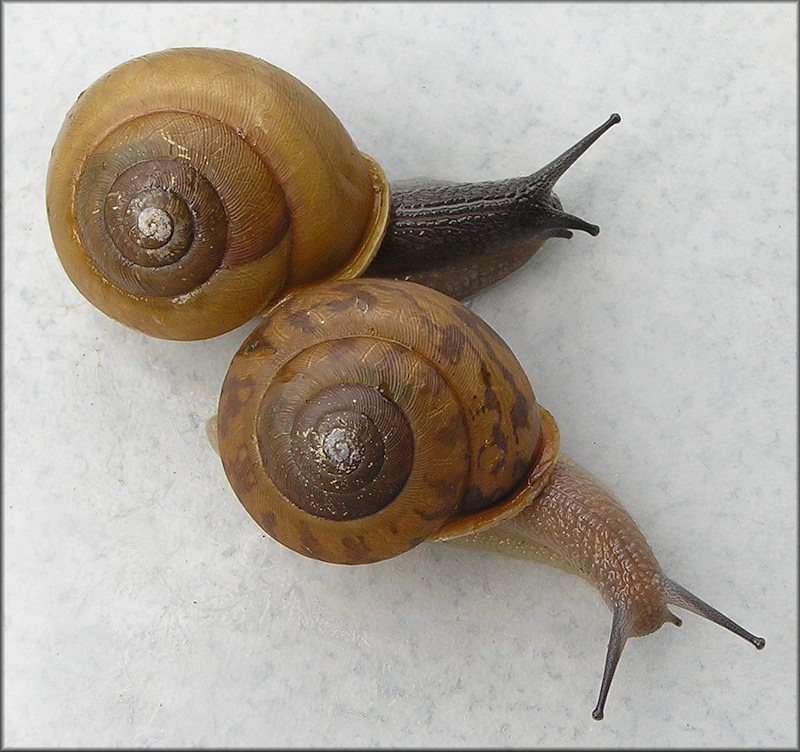Classification
Kingdom:
Animalia
Phylum:
Mollusca
Class:
Gastropoda
Order:
Stylommatophora
Family:
Polygyridae
Genus:
Mesodon
Species:
andrewsae
Kingdom: Animalia - The Kingdom Animalia is comprised vertebrates (the presence of a spinal column) and invertebrates (lacking a backbone). The Kingdom contains a very vast variety of organisms. There are 3 Kingdoms that contain multicellular organisms: Animalia, Plantae, and Fungi. The Balsam Globe is an invertebrate and, like other members of the Animalia group, ingests their food and digests it in its respective digestive organs (Hickman et al. 2011).
Phylum: Mollusca - The Mollusca branch is characteristic by the usual presence of a calcium enriched shell(s) and internal organs that are covered by a mantle. An anterior head is conspicuously formed and contain relatively complex neurological development (Parker 1982). As seen above, the Balsam Globe has a defined anterior head and a shell.
Class: Gastropoda - Externally, the body plan of a Gastropoda is divided into a head, body and foot (which helps in its mobility). There is only one shell present which is coiled, as seen above (Parker 1982).
Order: Stylommatophora - As a terrestial snail, the Balsam Globe has the obvious characteristic of having eyes at the ends of their protruding tentacles. This is a characteristic of the order Stylommatophora (Klappenbach 2012).
Family: Polygyridae - The members of this family contain both male and female genitalia. The shell characteristically is has an inverted toothed lip and the color is between brown and yellow (Parker 1982). The picture above does show the easier traits to see and does indeed have an inverted lip and a brown shell.
Mesodon andrewsae - According to W.G. Binney, the genus Mesodon is separated from other polygyrids from the characteristics of the lateral and marginal teeth. The first lateral teeth do not have side cusps with cutting points (Binney 1878). The species naming generally is related to the discoverer personally, a descriptive piece of the organism, the region it was found, or amongst other reasons (Krulwich 2008).
